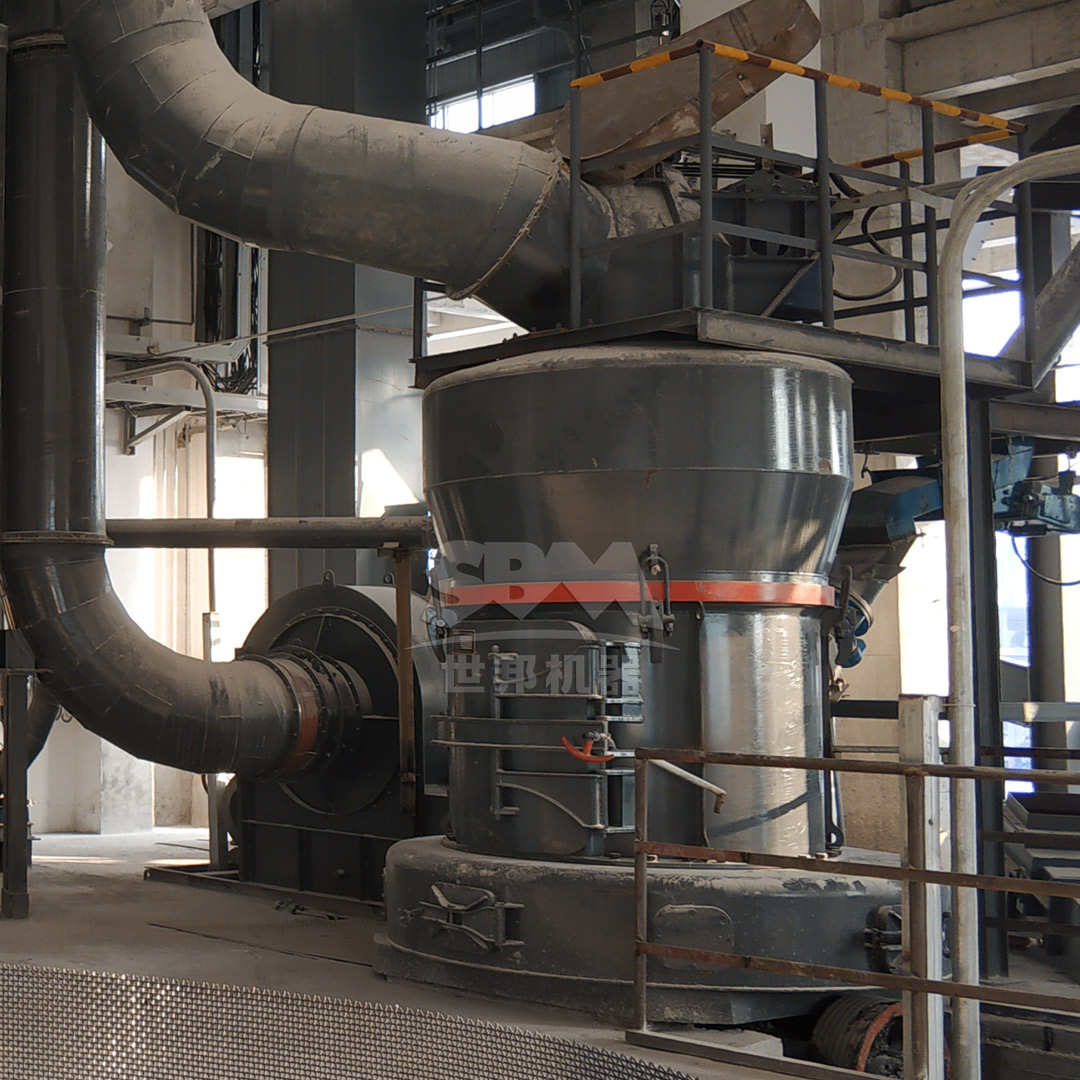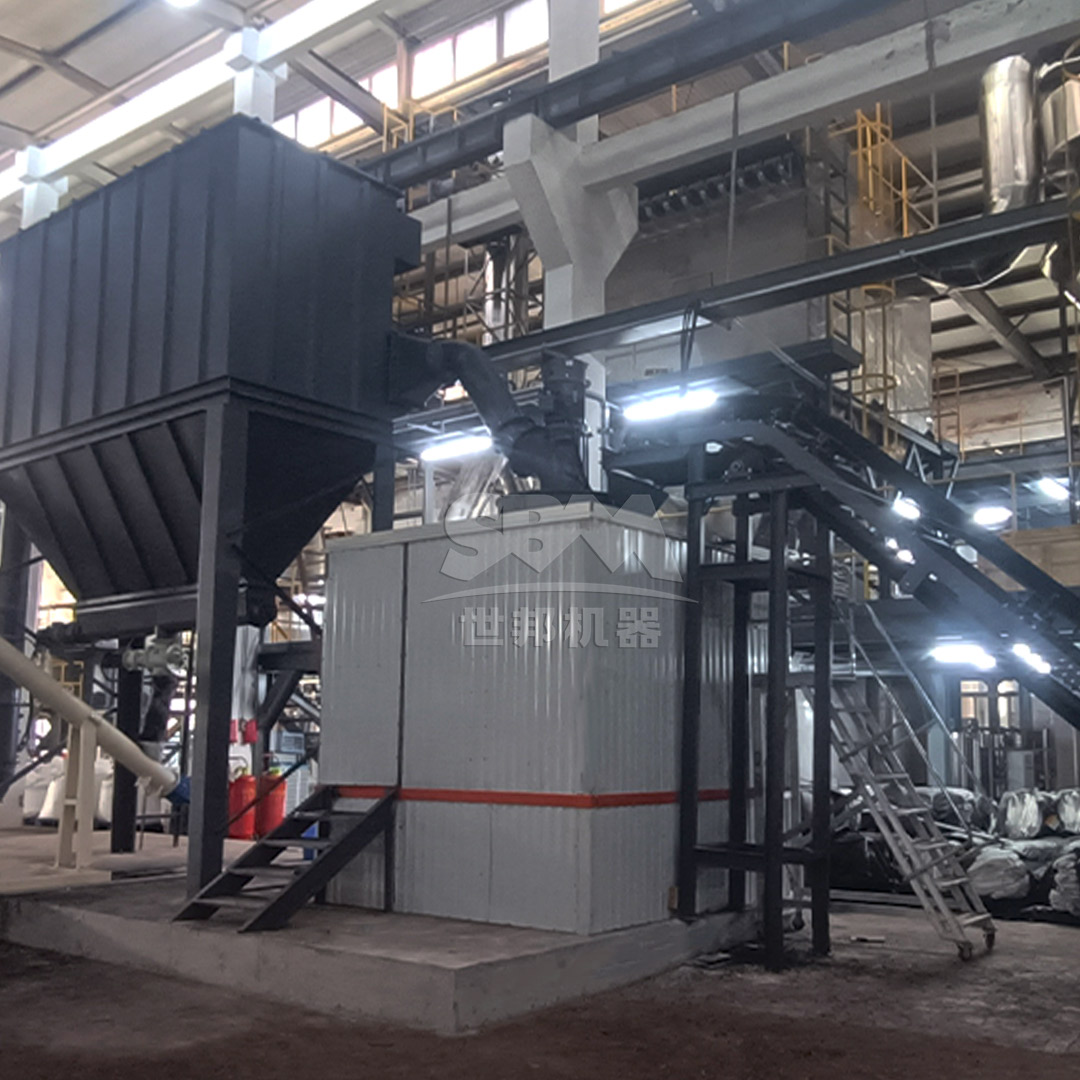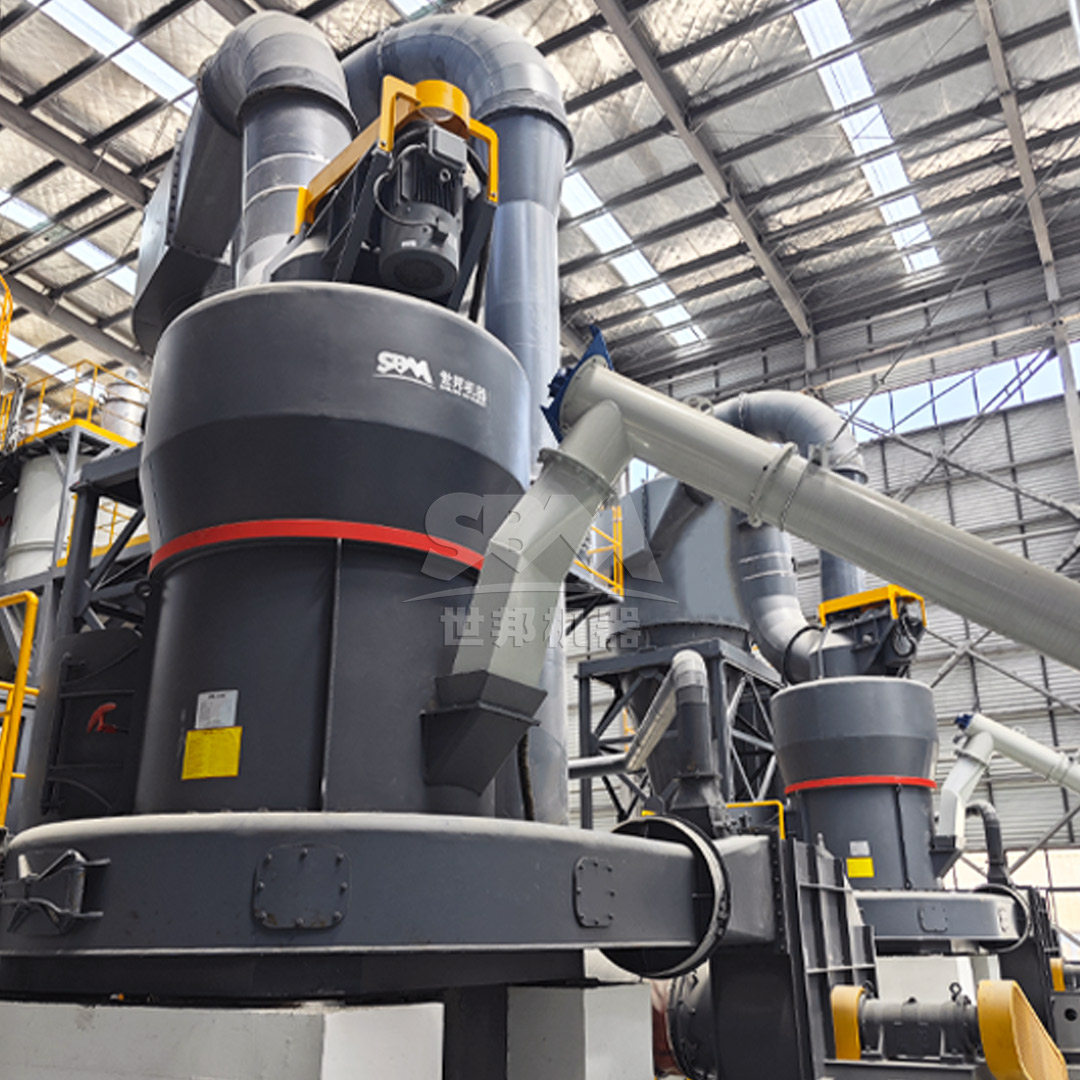October 15, 2025
Introduction
The paper and pulp industry relies heavily on high-quality fillers and coating pigments to achieve optimal paper properties, with limestone (calcium carbonate) being one of the most essential materials. The efficiency of limestone grinding directly impacts production costs, product quality, and environmental compliance. Modern roller mill technology has revolutionized this process, offering significant advantages over traditional grinding methods.
This article explores how advanced limestone roller mills enhance operational efficiency in paper and pulp manufacturing, focusing on technological innovations that deliver superior performance, reduced energy consumption, and improved environmental sustainability.
The Role of Limestone in Paper and Pulp Manufacturing
Limestone, primarily in the form of ground calcium carbonate (GCC), serves multiple critical functions in paper production:
- Filler Application: GCC improves paper opacity, brightness, and printability while reducing production costs by replacing more expensive fiber content.
- Coating Pigment: Ultra-fine GCC provides smooth surface characteristics essential for high-quality printing papers.
- Acid Neutralization: Calcium carbonate helps maintain optimal pH levels in pulp processing, reducing chemical consumption.
The quality requirements for GCC in paper applications are stringent, with specific particle size distribution, brightness, and purity standards that must be consistently met.
Particle Size Requirements for Different Paper Grades
| Paper Grade |
Required Particle Size (D97) |
Specific Surface Area (m²/g) |
| Newsprint |
45-60μm |
0.8-1.2 |
| Writing/Printing |
10-20μm |
2.5-4.0 |
| Coated Paper |
2-5μm |
5.0-8.0 |
| Specialty Papers |
1-2μm |
8.0-12.0 |
Traditional Grinding Methods vs. Modern Roller Mills
Traditional ball mills and Raymond mills have been widely used for limestone grinding in the past, but they present several limitations:
- High Energy Consumption: Ball mills typically consume 30-50% more energy than modern roller mills for the same output.
- Limited Particle Size Control: Traditional systems struggle to achieve the narrow particle size distributions required for premium paper grades.
- High Maintenance Requirements: Frequent replacement of grinding media and liners increases operational costs and downtime.
- Environmental Challenges: Higher noise levels and dust emissions require additional mitigation measures.
Modern roller mills address these limitations through innovative design and advanced control systems, delivering superior performance across all critical parameters.

Key Technological Advancements in Modern Roller Mills
High-Efficiency Grinding Mechanisms
Contemporary roller mills employ advanced grinding principles that significantly improve efficiency:
- Material Bed Compression: Unlike impact-based grinding, roller mills utilize pressure between grinding elements to achieve comminution, resulting in higher efficiency and lower wear.
- Multi-Stage Grinding: Progressive grinding stages ensure optimal particle size reduction with minimal energy input.
- Integrated Classification: Built-in dynamic classifiers enable real-time particle size control without separate classification equipment.
Intelligent Control Systems
Modern mills incorporate sophisticated automation that optimizes performance:
- Real-time Monitoring: Continuous measurement of key parameters including particle size, throughput, and energy consumption.
- Adaptive Control: Automatic adjustment of operational parameters to maintain consistent product quality despite variations in feed material.
- Predictive Maintenance: Advanced diagnostics identify potential issues before they cause unplanned downtime.
SCM Ultrafine Mill: Revolutionizing High-Quality GCC Production
For paper manufacturers requiring ultra-fine calcium carbonate for premium coated papers, the SCM Ultrafine Mill represents a technological breakthrough. This advanced grinding system delivers exceptional performance specifically tailored to the demanding requirements of the paper industry.
Technical Superiority for Paper Applications
The SCM Ultrafine Mill offers several distinct advantages for GCC production:
- Precise Particle Size Control: With output fineness ranging from 325 to 2500 mesh (D97≤5μm), the SCM mill consistently produces the ultra-fine GCC required for high-quality paper coatings.
- Superior Energy Efficiency: Operating at 30% lower energy consumption compared to conventional jet mills while delivering twice the production capacity, significantly reducing operational costs.
- Advanced Classification Technology: The vertical turbine classifier ensures precise particle size cuts with no coarse powder contamination, guaranteeing uniform product quality.
Operational Benefits in Paper Manufacturing
Paper manufacturers implementing the SCM Ultrafine Mill report substantial improvements:
- Enhanced Product Quality: Consistent production of GCC with optimal particle size distribution improves paper coating uniformity and printability.
- Reduced Operating Costs: Lower energy consumption and extended wear part life decrease production costs by 25-40% compared to traditional systems.
- Environmental Compliance: Pulse dust collection efficiency exceeds international standards, while noise levels below 75dB create a better working environment.
| SCM Model |
Processing Capacity (ton/h) |
Main Motor Power (kW) |
Recommended Application |
| SCM800 |
0.5-4.5 |
75 |
Specialty Paper Coating |
| SCM1000 |
1.0-8.5 |
132 |
Premium Printing Paper |
| SCM1250 |
2.5-14 |
185 |
Standard Coated Paper |
| SCM1680 |
5.0-25 |
315 |
Large-Scale Production |

MTW Series Trapezium Mill: Optimal Solution for Standard GCC Production
For paper fillers and standard coating applications, the MTW Series Trapezium Mill provides an ideal balance of performance, efficiency, and reliability. This robust grinding system is specifically engineered for high-volume production of quality GCC.
Engineering Excellence for Consistent Performance
The MTW Series incorporates several innovative features that enhance its suitability for paper industry applications:
- Advanced Wear Protection: Combined shovel blade design and curved air channel reduce maintenance costs and extend operational life.
- High-Efficiency Transmission: Bevel gear overall transmission achieves 98% efficiency while saving space and reducing installation costs.
- Optimized Airflow Design: Curved air duct minimizes energy loss and improves material transport efficiency.
Economic Advantages for Paper Manufacturers
The MTW Series delivers tangible economic benefits:
- Reduced Maintenance Costs: Wear-resistant volute structure and innovative component design lower maintenance expenses by 30% compared to conventional mills.
- High Production Capacity: With processing capabilities from 3 to 45 tons per hour, the MTW series supports large-scale paper manufacturing operations.
- Flexible Configuration: Multiple model options allow paper manufacturers to select the ideal capacity for their specific production requirements.
Energy Efficiency and Environmental Benefits
Modern roller mills contribute significantly to the paper industry’s sustainability goals through reduced energy consumption and improved environmental performance.
Energy Consumption Comparison
| Grinding System |
Energy Consumption (kWh/ton) |
CO2 Emissions (kg/ton) |
Noise Level (dB) |
| Traditional Ball Mill |
45-60 |
35-48 |
95-105 |
| Raymond Mill |
35-50 |
28-40 |
85-95 |
| SCM Ultrafine Mill |
25-35 |
20-28 |
70-75 |
| MTW Trapezium Mill |
28-38 |
22-30 |
75-80 |
Environmental Compliance
Advanced roller mills incorporate multiple environmental protection features:
- Efficient Dust Collection: Pulse dust collectors with efficiency exceeding 99.9% ensure compliance with stringent emission standards.
- Noise Reduction: Integrated soundproofing technology maintains workplace noise levels within regulatory limits.
- Minimal Waste Generation: Optimized grinding efficiency and extended component life reduce solid waste from wear parts.
Operational Considerations for Paper Manufacturers
Implementing modern roller mill technology requires careful consideration of several operational factors:
Integration with Existing Processes
Successful implementation involves:
- Feed System Compatibility: Ensuring proper integration with existing material handling systems.
- Product Quality Consistency: Establishing control parameters to maintain consistent GCC quality for paper production.
- Maintenance Planning: Developing preventive maintenance schedules based on manufacturer recommendations and operational experience.
Training and Skill Development
Maximizing the benefits of advanced roller mill technology requires:
- Operator Training: Comprehensive training on system operation, monitoring, and basic troubleshooting.
- Maintenance Expertise: Developing in-house capability for routine maintenance and minor repairs.
- Process Optimization: Continuous improvement based on operational data and performance metrics.

Economic Analysis and Return on Investment
The transition to modern roller mill technology represents a significant investment that delivers compelling economic returns through multiple channels:
Cost Reduction Components
- Energy Savings: 30-40% reduction in specific energy consumption compared to traditional grinding systems.
- Maintenance Cost Reduction: Extended component life and reduced frequency of maintenance interventions.
- Labor Efficiency: Automated operation reduces manual intervention and associated labor costs.
- Improved Product Yield: Better particle size control reduces waste and improves raw material utilization.
Return on Investment Calculation
Typical payback periods for roller mill investments range from 18 to 36 months, depending on:
- Production volume and utilization rate
- Local energy costs
- Existing equipment condition and operating costs
- Product quality improvements and market positioning
Future Trends and Developments
The evolution of roller mill technology continues, with several emerging trends likely to further enhance efficiency in paper manufacturing:
Digitalization and Industry 4.0
Future developments include:
- Advanced Process Control: AI-driven optimization of grinding parameters based on real-time quality feedback.
- Predictive Maintenance: Enhanced diagnostics and failure prediction using machine learning algorithms.
- Remote Operation: Cloud-based monitoring and control enabling centralized management of distributed operations.
Sustainability Enhancements
Ongoing research focuses on:
- Further Energy Reduction: Novel grinding mechanisms and improved classification efficiency.
- Circular Economy Integration: Enhanced capability to process alternative calcium sources and byproducts.
- Carbon Footprint Reduction: Optimization of overall process carbon intensity through energy efficiency and renewable energy integration.
Conclusion
Modern limestone roller mills represent a transformative technology for the paper and pulp industry, delivering substantial improvements in efficiency, product quality, and environmental performance. The advanced engineering of systems like the SCM Ultrafine Mill and MTW Series Trapezium Mill enables paper manufacturers to produce superior ground calcium carbonate with significantly reduced energy consumption and operational costs.
As the paper industry continues to face competitive pressures and sustainability challenges, investing in advanced grinding technology provides a strategic advantage through improved product quality, reduced environmental impact, and enhanced economic performance. The ongoing evolution of roller mill technology promises even greater benefits in the future, supporting the paper industry’s transition toward more sustainable and efficient manufacturing processes.
For paper manufacturers seeking to optimize their limestone grinding operations, modern roller mills offer a proven solution that balances technical performance, economic viability, and environmental responsibility. By selecting the appropriate technology for specific application requirements and implementing it effectively, paper companies can achieve significant competitive advantages in an increasingly challenging market environment.


